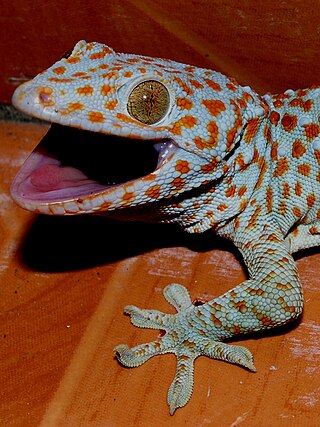
Gekkonidae is the largest family of geckos, containing over 950 described species in 62 genera. The Gekkonidae contain many of the most widespread gecko species, including house geckos (Hemidactylus), the tokay gecko (Gekko), day geckos (Phelsuma), the mourning gecko (Lepidodactylus), and dtellas (Gehyra). Gekkonid geckos occur globally and are particularly diverse in tropical areas. Many species of these geckos exhibit an adhering ability to surfaces through Van der Waals forces utilizing intermolecular forces between molecules of their setae and molecules of the surface they are on.

Afroedura is a genus of African geckos, lizards in the family Gekkonidae. Member species are collectively known as rock geckos or flat geckos.
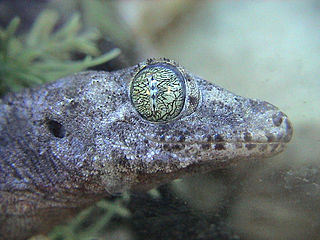
Gehyra is a genus of geckos in the family Gekkonidae. They are known as web-toed geckos or dtellas, and most species within the genus bear close resemblance to geckos from the genus Hemidactylus.
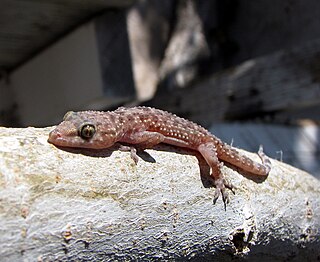
Hemidactylus is a genus of the common gecko family, Gekkonidae. It has 195 described species, newfound ones being described every few years. These geckos are found in all the tropical regions of the world, extending into the subtropical parts of Africa and Europe. They excel in colonizing oceanic islands by rafting on flotsam, and are for example found across most of Polynesia. In some archipelagoes, cryptic species complexes are found. Geckos like to live in and out of houses. They have been introduced to many areas around the world.

Pachydactylus is a genus of insectivorous geckos, lizards in the family Gekkonidae. The genus is endemic to Africa, and member species are commonly known as thick-toed geckos. The genus also displays rich speciation, having 58 distinct species identified when compared to other closely related gecko genera like Rhoptropus, most of which have emerged since 35Ma. It has been suggested that the reason for this rich speciation not from adaptive radiation nor nonadaptive radiation, but that the genus represents a clade somewhere between the two drivers of speciation. P. bibronii geckos have been used by NASA as animal models for experimentation.

Cnemaspis is a genus of diurnal (day) geckos found in Asia. With over 100 species, it is one of the most diverse genera of geckos. Molecular phylogenies suggest that the two regional groupings may form distinct clades which are not each other's closest relatives.

Cyrtodactylus is a diverse genus of Asian geckos, commonly known as bent-toed geckos, bow-fingered geckos, and forest geckos. The genus has 361 described species as of 2024, which makes it the largest of all gecko genera.
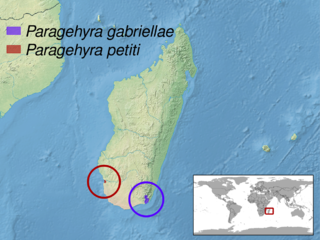
Paragehyra is a genus of lizards in the family Gekkonidae (geckos). The genus is endemic to Madagascar.

Bavayia is a genus of lizards in the family Diplodactylidae. Species in the genus Bavayia are also known commonly as New Caledonian geckos or bavayias. The genus is native to the remote New Caledonia and Loyalty Islands. The 41 species are moderately small to medium-sized geckos, and are distinguished from other genera by their tail length and the shape of their digits.

The genus Cordylus includes a wide variety of species of small to medium spiny lizards from Africa, collectively called girdle-tailed lizards or girdled lizards. All are diurnal and ovoviviparous. Most species are rupicolous (rock-dwelling), while a few species are arboreal or live in burrows. They defend themselves with osteoderms and by quickly retreating into rock crevices or burrows. Many species live in groups, and males defend territories.
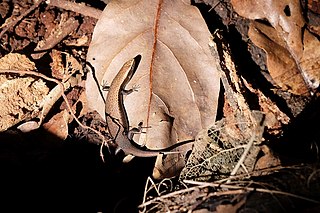
Caledoniscincus is a genus of lizards in the family Scincidae (skinks). The genus is endemic to New Caledonia.
Nannoscincus is a genus of small skinks, lizards in the family Scincidae. The genus is endemic to New Caledonia.
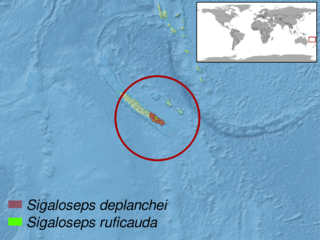
Sigaloseps is a genus of skinks which inhabit the moist, closed forest of southern New Caledonia.
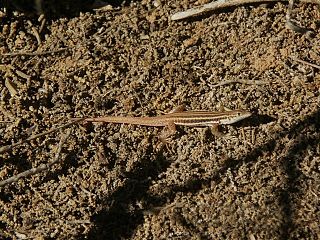
Pedioplanis is a genus of lizards in the family Lacertidae. All species of Pedioplanis are endemic to southern Africa.
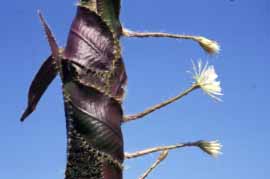
Strophocactus is a genus of cacti in the subfamily Cactoideae. Its status and circumscription remain somewhat uncertain, with the genus containing one to three species. Molecular phylogenetic data suggest that it consists of three species, including two formerly comprising the genus Pseudoacanthocereus. With this circumscription, the species have different growth habits, but share similarities in their flowers, which are white and open at night.

The woodbush legless skink is a species of legless skink. It is found in the Wolkberg mountains of Limpopo Province, South Africa. Females of the species give birth to live young. This lizard species was formerly placed in a monotypic genus as Acontophiops lineatus. Morphologically the genus shows similarities to Acontias cregoi and a recent review placed both of these within the genus Acontias, which, as Acontias lineatus was already occupied, required a new name for this species.
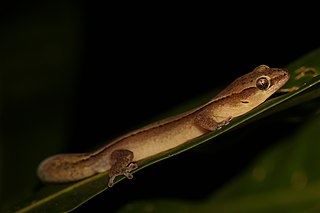
Dierogekko is a genus of geckos in the family Diplodactylidae. The genus is endemic to the northwest portion of New Caledonia. They are sometimes known commonly as the striped geckos or the New Caledonian geckos. Dierogekko are small geckos with simple, granular scales and subdued patterning of broad longitudinal stripes or spots. They are similar in overall appearance and habit to closely related geckos in the genera Bavayia and Oedodera, and the type species D. validiclavis was once referred to Bavayia.
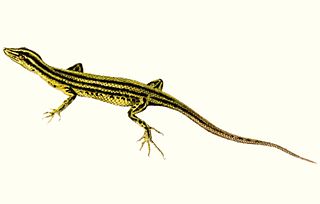
Eugongylinae is a subfamily of skinks within the family Scincidae. The genera in this subfamily were previously found to belong the Eugongylus group in the large subfamily Lygosominae.
Phaeoscincus taomensis is a species of skink found in New Caledonia.
Ancylodactylus is a genus of diurnal (day) geckos in the family Gekkonidae. The genus is endemic to Africa. Most of the species in the genus Ancyclodactylus were formerly assigned to the genus Cnemaspis.
















